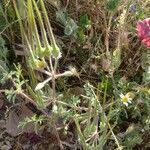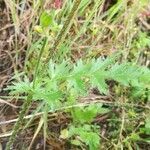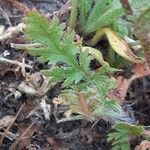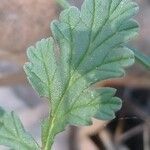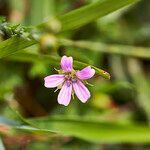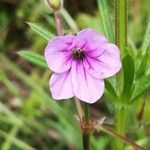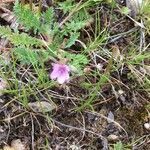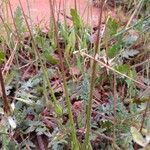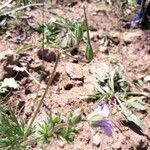Annual prostrate rosulate to caulescent herb. Stems up to 0.4 m long, reddish-brown, hispid and with glandular hairs. Leaves alternate, subopposite to opposite, sparsely to densely hispid and glandular; petiole 5-90 mm long; stipules 4-6, ovate; blade 25-60(-100) x (5-)10-35(-45) mm, pinnately veined, oblong to ovate, at least the upper deeply pinnatifid and sharply dentate, apex acute to subulate, base obtuse. Inflorescence of 1-4 flowers; hispid to hirsute and glandular; peduncles (20-)40-70(-125) mm; pedicels (11-)20-30(-37) mm long; bracts 4-6, ovate, subglabrous, free, straw coloured, scarious. Sepals 5-6 x 3 mm, hirsute and glandular, apical mucro terete and 1 mm long, margin often reddish. Petals 7-14 x 3^1 mm, pink to pale violet and often with dark red veins. Stamens free; fertile stamens with narrowly ovate filaments of 5 mm long; pollen striate interwoven to reticulate, polar diameter 77 µm; staminodes subulate, 2 mm long. Nectaria equal, 0.7 x 0.7 mm. Ovary 1-1.5 mm long with terminal beak 2-3 mm long; style 0; stigmas 1 mm long. Mericarps: head 6-14 mm long, apical pit eglandular and with 2(-3) furrows below pit, tail 50-110(-200) mm long. Seed 5 mm long. Flowering occurs from July to December with the peak in September.
A herb.
